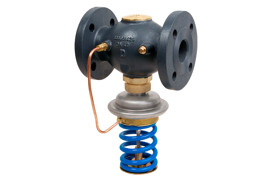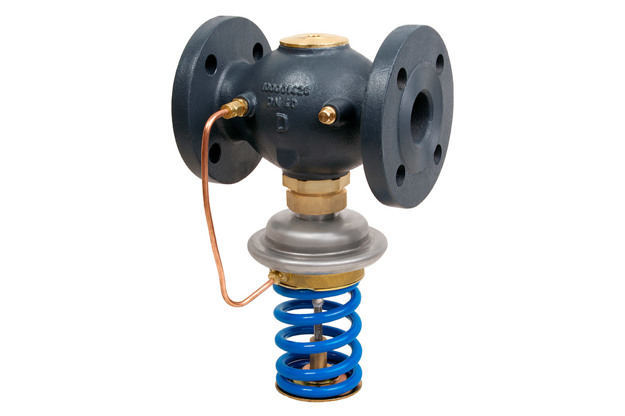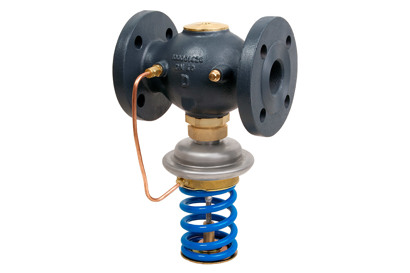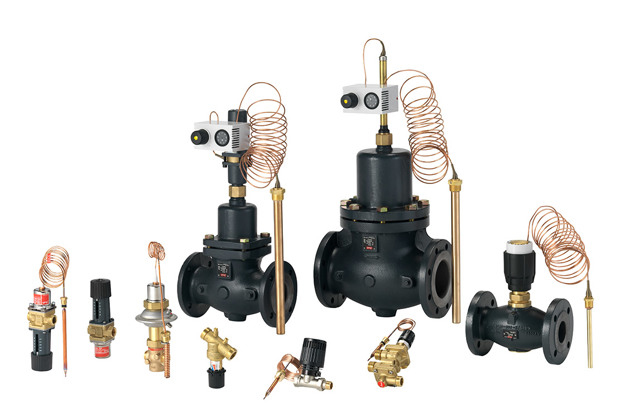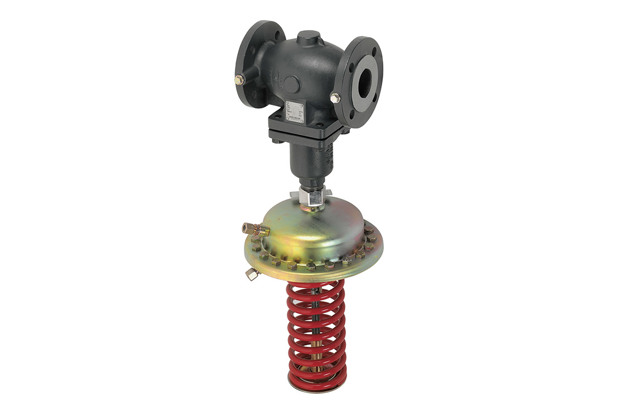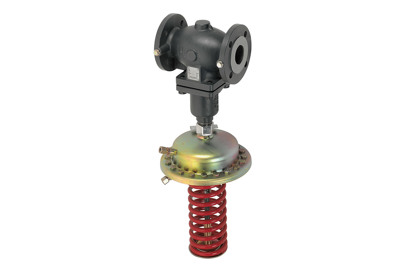Optimal hydronic balance and perfect temperature control are the key to maximizing the efficiency of heating or cooling networks. As a world leader in heating control technology, we offer a comprehensive range of products and integrated solutions for even the most challenging district energy conditions. Danfoss control solutions improve the efficiency of district energy networks and allow end-users to enjoy an ideal indoor climate while maximizing energy efficiency.
Differential pressure controllers automatically ensure dynamic hydronic balancing in the district energy network
Water flows through a supply network according to the principle of least resistance. If there is no hydraulic balance, the consumers nearest to the power supply enjoy a better service than more remotely located consumers.
Differential pressure controls can be used to reduce available differential pressure in a specific area of a network (area control), before each building subscriber station or at each control valve. By limiting differential pressure to the required value, this automatically and dynamically balances the network, ensuring that all consumers receive the specified flow.
The system will remain in balance and will not require rebalancing, even when the network is extended to new areas.
This also applies in the event that the location of the energy source changes, or during significant variations in user consumption. This not only contributes to energy efficiency but also improves end-user comfort.
Differential pressure controllers eliminate pressure variations and provide optimum operating conditions
In variable flow systems, large variations arise in the available differential pressure. Because they are sized for the lowest available differential pressure, this means that the control valves are forced to work with a very small degree of valve opening and at many times larger differential pressure.
At these high pressures, the valves become too large and temperature control inaccurate and unstable. This causes unnecessary equipment wear and higher return temperatures, as well as affecting the other valves in the system.
The differential pressure control is thus the key to eliminating pressure variations and providing control valves and house stations with lower and stable differential pressure. Good working conditions for control valves increase the quality and precision of temperature control, even for low flow requirements. The connected system is protected against pressure surges, fluctuations, cavitation and noise.
Features and benefits
Eliminates pressure variations and provide optimum operating conditions with improved temperature control quality
Made for demanding systems, resistant to corrosion, cavitation and dirt
Connected system is protected against pressure surges, fluctuations, cavitation and noise
Videos
Product range
-
if (isSmallPicture) {


 Pressure relief controllers
Pressure relief controllersPressure and differential pressure relief controllers can protect variable flow pumps from overload in the event that flow falls below minimum pump capacity. They relief pump/application and forward heat power to other connections.
-
if (isSmallPicture) {


 Self-acting temperature controllers
Self-acting temperature controllersThermostatic temperature controllers are used to control the flow temperature in instantaneous/storage domestic hot water and heating systems. In multi-family houses and commercial buildings, they are used for hot water systems and for return temperature limitation in district heating applications.
-
if (isSmallPicture) {


 Multifunctional controllers
Multifunctional controllersFlexible and modular design allows combination of several control functions into one controller to meet the most demanding requirements across a wide range of applications.
-
if (isSmallPicture) {


 Pressure reduction controllers
Pressure reduction controllersPressure reduction controllers ensure a better control under lower load. Reducing high pressure enables accurate and stable temperature control of the application behind the pressure reducer.
-
if (isSmallPicture) {


 Safety pressure controllers
Safety pressure controllersSafety Pressure Controllers through automatic opening of the valve prevents exceeding pressure before the valve and behind the valve.

Unlock the grid to its full potential
We can help utilities to optimize their supply of district heating to cities with a positive impact on decarbonization and reduced energy consumption. It's time to unlock the grid's full potential for ultimate cost-effectiveness, energy-efficiency and a resilient path to a greener future.

